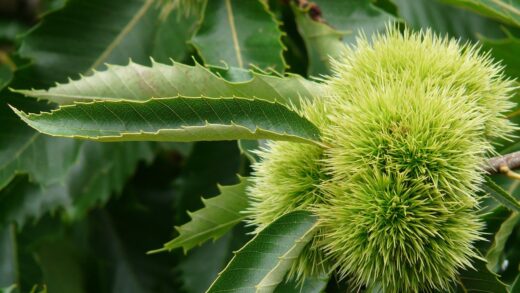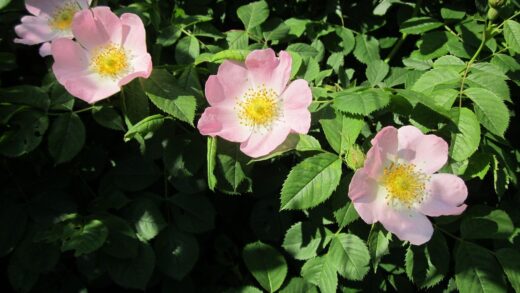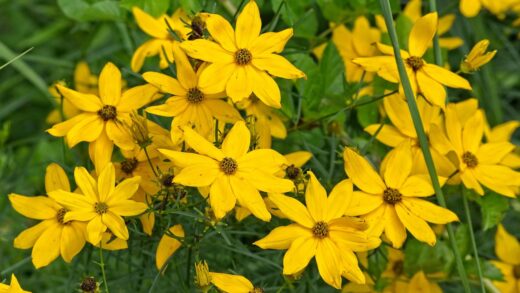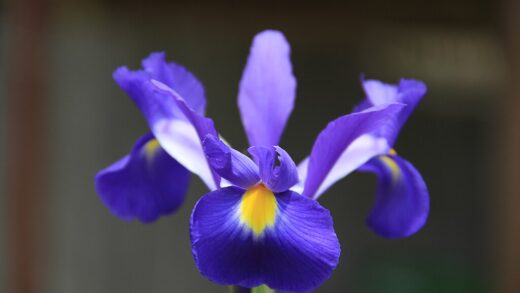The light requirement is one of the most critical environmental factors influencing the health, vigor, and aesthetic quality of the Chinese juniper. This species is fundamentally a sun-loving plant, having evolved in open habitats where it receives abundant, direct sunlight throughout the day. Providing adequate light is not merely a preference but a physiological necessity for the plant to perform essential functions like photosynthesis efficiently. When deprived of sufficient sunlight, a Chinese juniper will exhibit a predictable decline in health, characterized by sparse foliage, poor color, and an increased susceptibility to a host of secondary problems. Therefore, selecting a planting site that meets its high light demands is the most important initial step toward successful cultivation.
Chinese junipers thrive and perform at their best when they are planted in a location that receives full, direct sun. In horticultural terms, “full sun” is generally defined as receiving at least six to eight hours of unobstructed sunlight per day. This ample light exposure is the primary driver for dense, compact foliage and the development of the rich green, blue-green, or golden hues for which many of its cultivars are prized. When bathed in sunlight, the plant can maximize its photosynthetic output, converting light energy into the chemical energy needed to fuel robust growth, a strong root system, and effective defense mechanisms against pests and diseases.
While the ideal condition is full sun, the Chinese juniper can demonstrate a degree of tolerance for partial shade, particularly in climates with very hot and intense summer sun. In such regions, a location that provides some light shade during the hottest part of the afternoon can actually be beneficial, helping to reduce heat stress and prevent foliage scorch. However, it is crucial to understand that this tolerance is limited. If the plant receives less than four to five hours of direct sunlight daily, its health and appearance will almost certainly begin to decline, underscoring its fundamental need for a high-light environment.
The quality of the foliage is a direct reflection of the light it receives. In full sun, the needles will be closely spaced along the stems, creating a full and dense appearance. The plant’s overall form, whether it be a low-growing groundcover or an upright tree, will be compact and well-defined. Furthermore, the coloration will be at its most vibrant. Cultivars selected for their unique colors, such as the golden ‘Aurea’ or the blue-toned ‘Blue Point’, will only display these signature hues when they receive enough sunlight to stimulate the production of the necessary pigments.
Effects of insufficient light
When a Chinese juniper is planted in a location with insufficient light, the consequences become apparent through several distinct and undesirable symptoms. The most noticeable effect is a change in the plant’s growth habit. In an effort to capture more light, the branches will become elongated and stretched out, a phenomenon known as etiolation. This results in a sparse, leggy, and open appearance, with large gaps between the branches, which is a significant departure from the dense, full form that is typically desired. The overall structure of the plant becomes weak and floppy.
More articles on this topic
Inadequate sunlight also leads to a significant thinning of the foliage and interior dieback. The needles on the parts of the plant that receive the most shade, typically the lower and inner branches, will begin to yellow, then turn brown and eventually fall off. This occurs because the plant will not expend energy to maintain foliage that is not able to photosynthesize effectively. Over time, this process leads to the development of a large “dead zone” in the center of the plant, leaving only a thin shell of live foliage on the outer tips of the branches that receive some light. This condition is largely irreversible, as junipers cannot generate new growth from old, bare wood.
The vibrant coloration of many Chinese juniper cultivars is another casualty of low-light conditions. Without the stimulus of strong sunlight, the production of the pigments that create the bright gold, silver-blue, or deep green colors is suppressed. As a result, a golden juniper may revert to a dull, chartreuse green, and a blue juniper may appear a muted, dusty green-gray. The plant loses the distinct ornamental characteristic for which it was chosen, looking washed-out and generally unhealthy. This loss of color is a clear visual indicator that the plant is not receiving the light energy it requires.
Beyond the aesthetic consequences, a lack of sufficient sunlight places the juniper under chronic stress, which severely compromises its ability to defend itself against pests and diseases. A light-starved plant is significantly more susceptible to fungal infections like Phomopsis and Kabatina tip blights, as the shaded, sparse foliage stays damp for longer periods, creating an ideal environment for pathogens. It also becomes a more attractive target for insect pests, such as scale and spider mites, as its weakened state makes it less able to mount an effective physiological defense against attack.
Acclimatizing junipers to new light conditions
When moving a Chinese juniper from one location to another, whether it’s from a nursery container to the garden or from one part of the landscape to another, it is important to consider the change in light conditions. A plant that was grown in a full-sun nursery environment can experience stress if suddenly moved to a slightly shadier spot, and vice versa. While junipers are not as sensitive as some other plants, a gradual acclimatization process can help to minimize transplant shock and allow the plant to adjust more smoothly to its new home.
More articles on this topic
If a juniper is being moved from a lower-light situation to a location with intense, full sun, there is a risk of foliage scorch. The needles that developed in shadier conditions are not physiologically prepared for the high levels of ultraviolet radiation and heat associated with direct sun. This can cause them to turn brown and appear burnt. To prevent this, it is beneficial to provide some temporary, filtered shade for the first week or two after planting. This can be achieved by using a shade cloth or by strategically placing a temporary barrier, like a piece of lattice, to break up the intense afternoon sun.
Conversely, when transplanting a juniper into a spot with slightly less light than it was previously used to, the primary goal is to ensure it still receives the absolute minimum amount of direct sun required for its health. This means carefully selecting a location that, while not full sun all day, still provides a solid block of at least four to six hours of direct, unfiltered sunlight. The morning sun is generally preferable to the harsh afternoon sun, so a location with an eastern exposure is often a good compromise if an all-day full-sun site is not available.
After transplanting, it is crucial to monitor the plant closely for signs of stress related to the new light conditions. Pay attention to the color of the foliage and watch for any signs of scorching or, conversely, the beginning of etiolation or thinning. Proper aftercare, especially consistent watering, is vital during this adjustment period. Adequate water helps the plant cope with the stress of both the transplanting process and the adaptation to a new light environment. It supports the physiological processes needed for the plant to adjust its leaf structure and photosynthetic capacity to the new conditions.
Light considerations for indoor bonsai specimens
Cultivating a Chinese juniper as an indoor bonsai presents a significant challenge primarily due to the difficulty of replicating its high light requirements inside a home. A juniper placed on a typical indoor windowsill, even a south-facing one, will rarely receive the intensity and duration of direct sunlight that it needs to thrive. The light passing through a window is filtered and significantly less intense than outdoor sunlight. This is the single most common reason that Chinese juniper bonsai fail when kept exclusively indoors for extended periods.
To have any chance of success, an indoor Chinese juniper bonsai must be placed in the sunniest possible location within the home. This means a spot directly in front of an unobstructed south-facing window where it can receive the maximum number of hours of direct sun available. However, even this is often insufficient. Therefore, it is almost always necessary to supplement the natural light with high-intensity artificial grow lights. These lights should be specifically designed for plant growth, providing a full spectrum of light, and they must be positioned close to the plant and run for 12 to 16 hours per day to compensate for the lower intensity.
The best practice for maintaining the health of a Chinese juniper bonsai is to keep it outdoors for as much of the year as possible. These plants are not true indoor plants; they are hardy outdoor trees that can be brought inside for short periods for display. Ideally, the bonsai should live outside in a full-sun location during the spring, summer, and fall, which allows it to store up the energy it needs to survive. It should then be brought into a protected, cold location (like an unheated garage or cold frame) for the winter to experience the necessary dormant period.
When a juniper bonsai is kept indoors, it is important to rotate the pot regularly, typically a quarter turn every week. This ensures that all sides of the plant receive some exposure to the primary light source, promoting more even growth and preventing the side facing away from the window from becoming weak and sparse. Meticulous attention to watering and humidity is also required, but no amount of perfect care in these areas can compensate for the fundamental problem of insufficient light. For the long-term health of a Chinese juniper bonsai, providing outdoor, full-sun conditions is not just beneficial, it is essential.


















